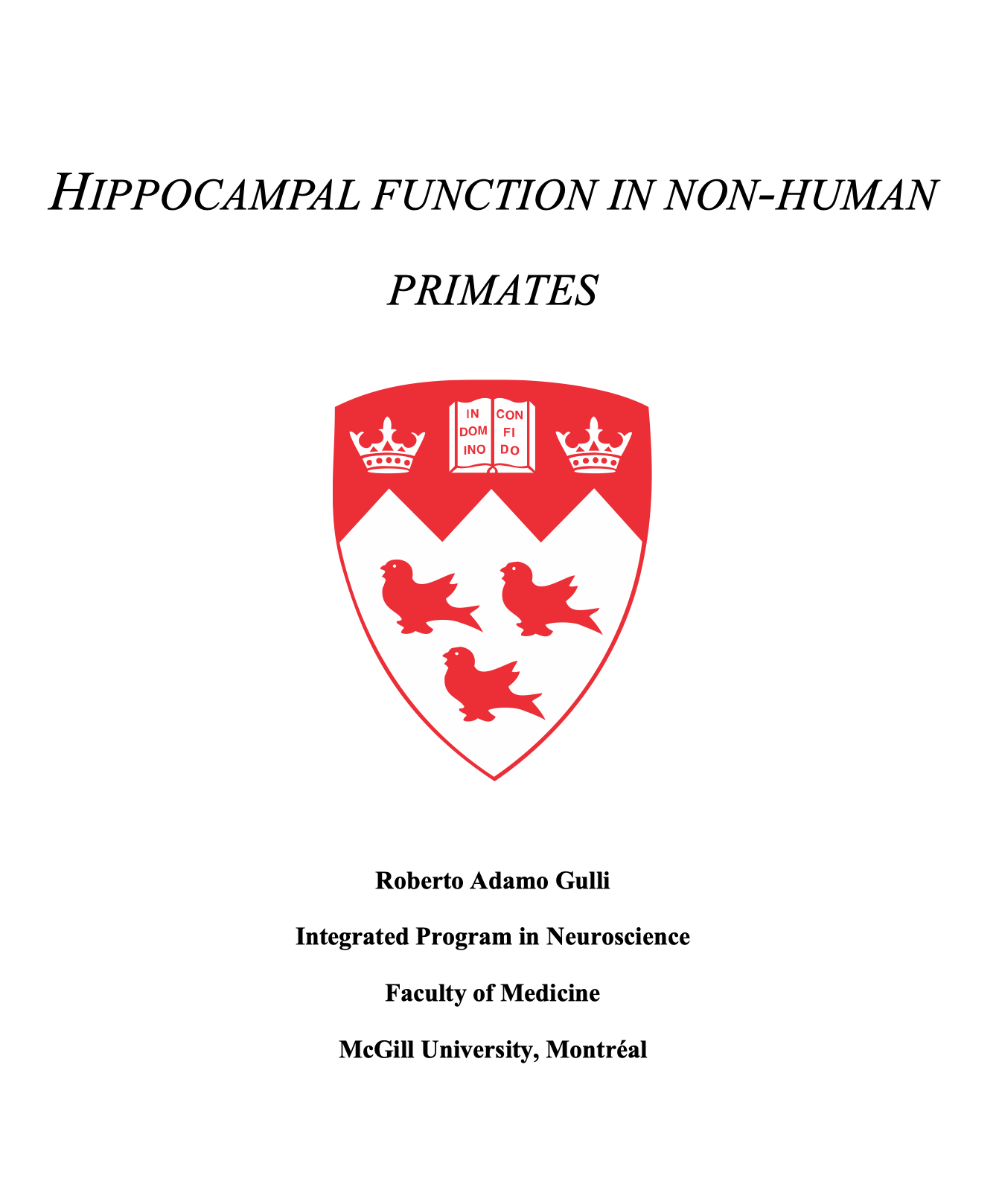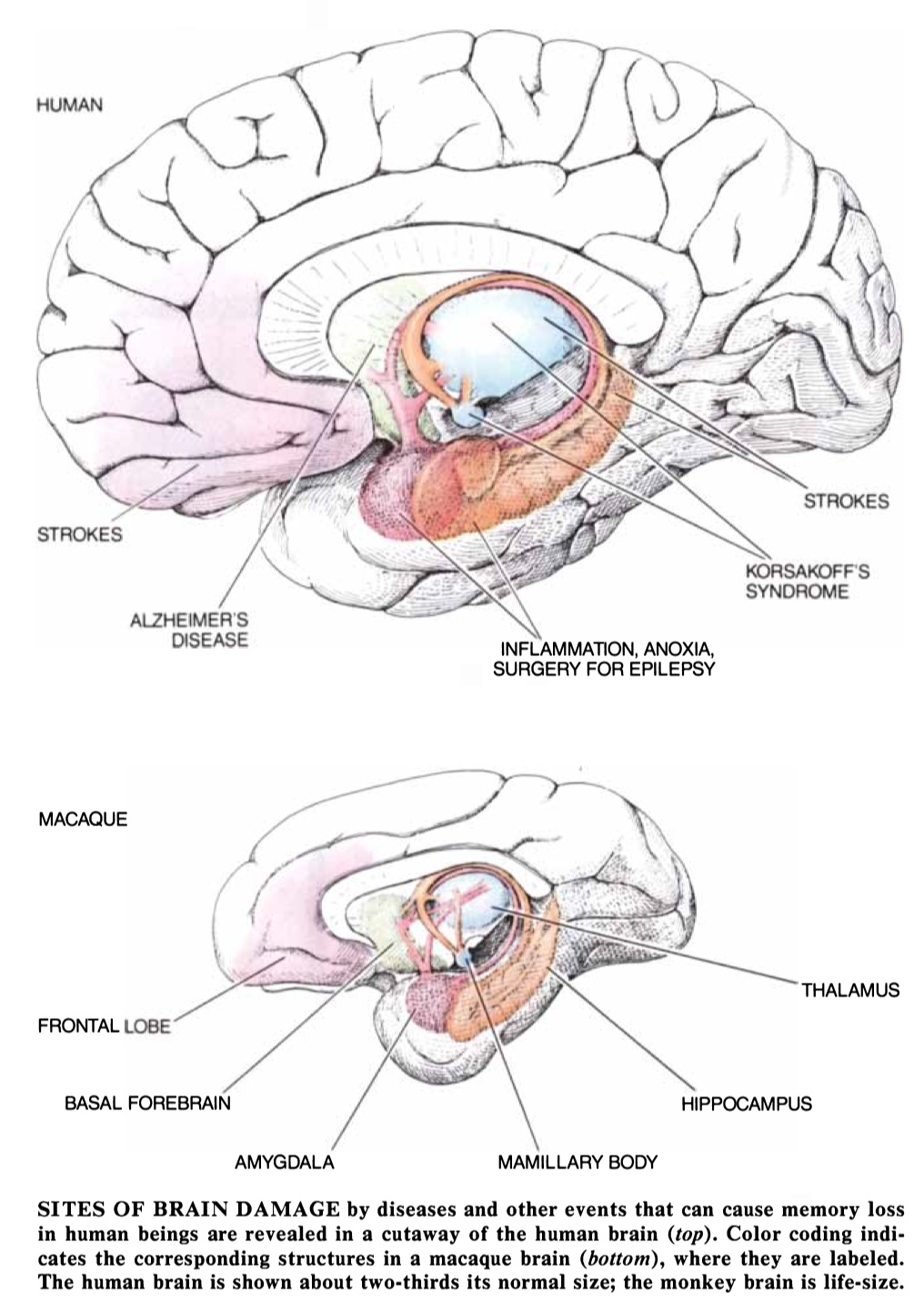Understanding hippocampal function in nonhuman primates
the abridged version of my PhD work

I was very fortunate to have done my PhD under the supervision of Julio Martinez-Trujillo, MD, PhD (now at the University of Western Ontario). My experience in McGill’s Integrated Program in Neuroscience Rotation PhD program was incredibly enriching, and Montréal was a fantastic city to live in. Feel free to contact me to talk more about it.
I started my PhD rotations at McGill studying the molecular memory trace in invertebrates called Aplysia californica. I studied how translational machinery at the synapse changed communication between pairs of neurons. Working on single synapses forced me to contemplate the incredible complexity the brain — seeing the synaptic machinery up close gave me greater appreciation for the brain as a whole. I was mystified that the activity coursing through trillions of these neural connections produce behaviours and feelings and thoughts. I learned that the nexus of systems-level neuroscience, computational neuroscience and behavioural ethology seems like a magical place to me.

During my first rotation, I also learned that if I wanted to understand memory at a computational and systems neuroscience level in mammals, I needed to start studying a brain region that is tucked deep in the temporal lobe: the hippocampus.
It is believed that the hippocampus binds diverse information from all sensory modalities together to support episodic memory. This explains why damage to the hippocampus and closely interconnected structures results in deficits in some forms of memory, like those on the left. In cognitive psychology, these types of memory deficits were often tested using tasks that require association of information, like context-object associative learning tasks. In a classic version of this, a subject encounters the same objects A and B across two environmental contexts. Subjects learn that which object is rewarded depends on the context. Hippocampal lesion subjects can’t perform these tasks.
When I started studying the hippocampus, I quickly learned that there’s a whole other line of hippocampal research that’s not about episodic memory. There’s a classic discovery from the rodent literature of specific neurons in the hippocampus called “place cells”. If a rat is following some trajectory from location A to B in an arena, a place cell is a neuron that fires action potentials whenever the subject is just at one location in the environment. The Nobel Prize in 2014 was awarded for work showing that the hippocampus forms a map of the environment, based on place cell activity. The “map” analogy is taken so far that some refer to the hippocampus and closely connected structures as the brain’s GPS.
In my PhD, I developed an new experimental paradigm that combined virtual reality tasks with hippocampal neurophysiology in monkeys to try to test different hypotheses about spatial and non-spatial activity of hippocampal neurons.
I showed that single neurons in the primate hippocampus encode information about space during virtual navigation in a foraging task and during a memory task. However, this encoding does not generalize across tasks, since these representations changed as a function of behavior. I determined that changes in spatial coding were attributed to non-linear mixing of spatial and non-spatial activity in single neurons. This work was recently published in Nature Neuroscience (pdf here).
My PhD work undermines a dogmatic view that the primary hippocampal function is abstract representation of space that generalizes across experiences. There’s a lot more detail about these studies in a few published locations, and in some papers that we’re still working towards publishing. You can check out the long version of my PhD thesis here, or check out on my publications page.